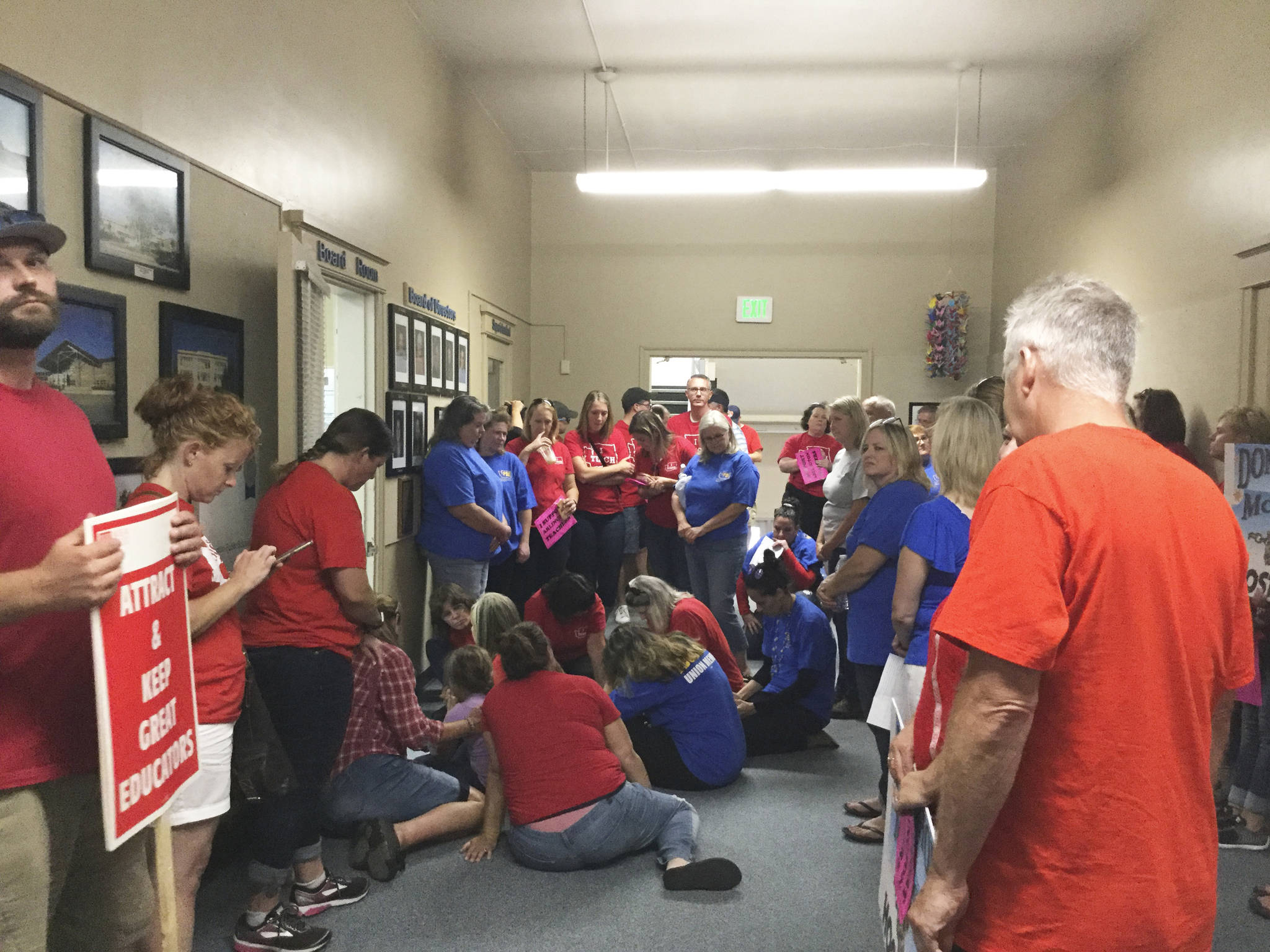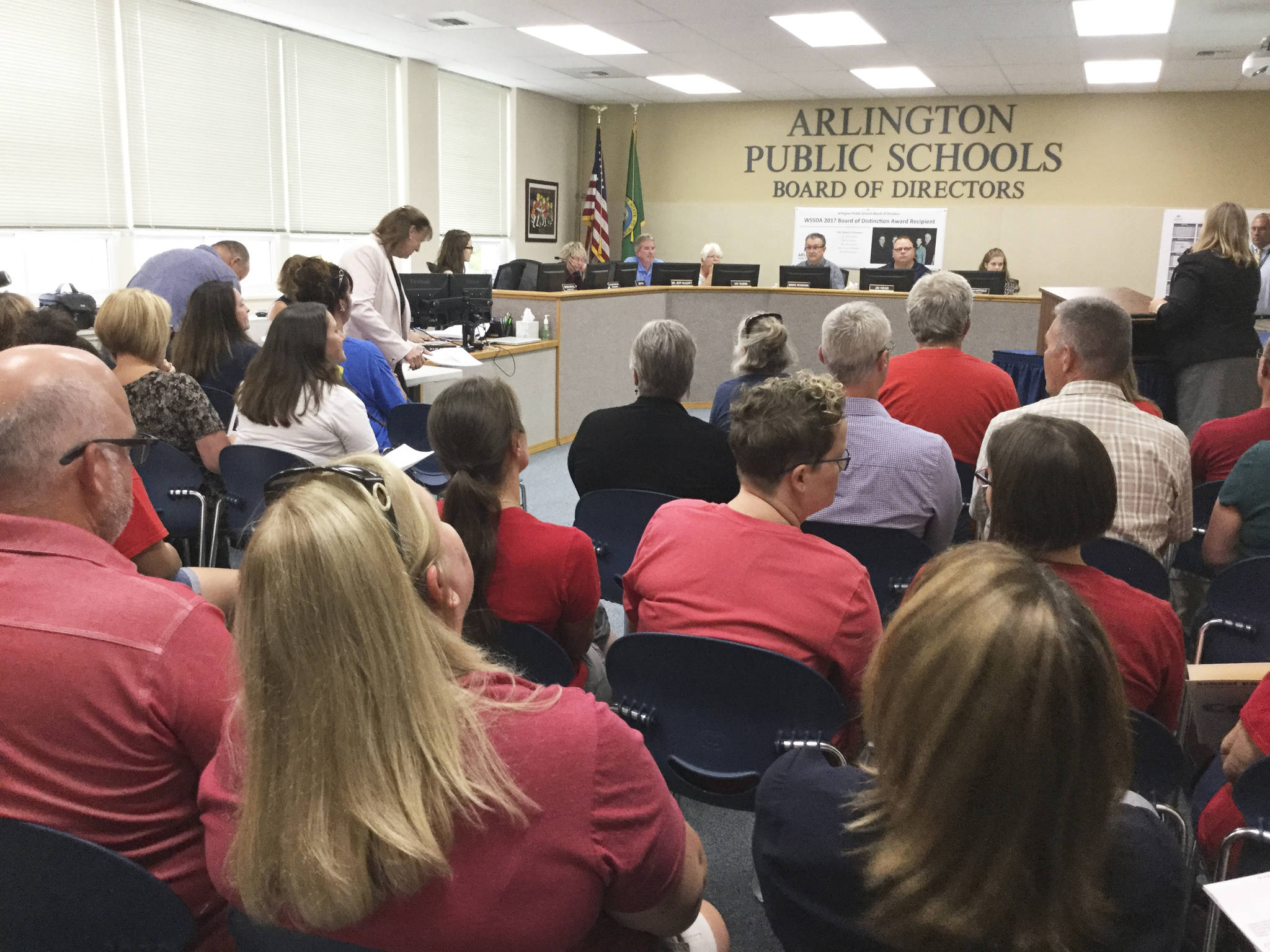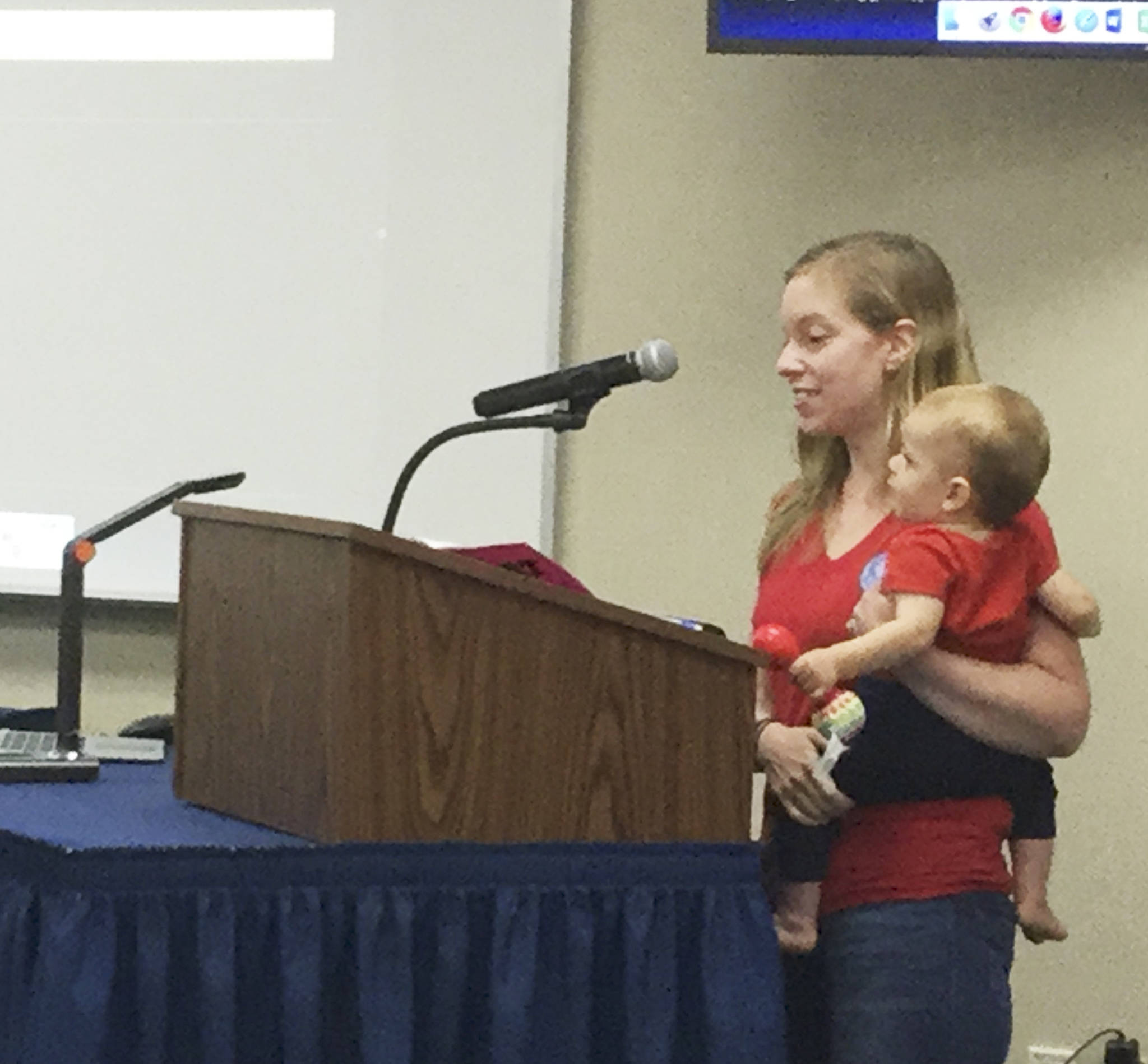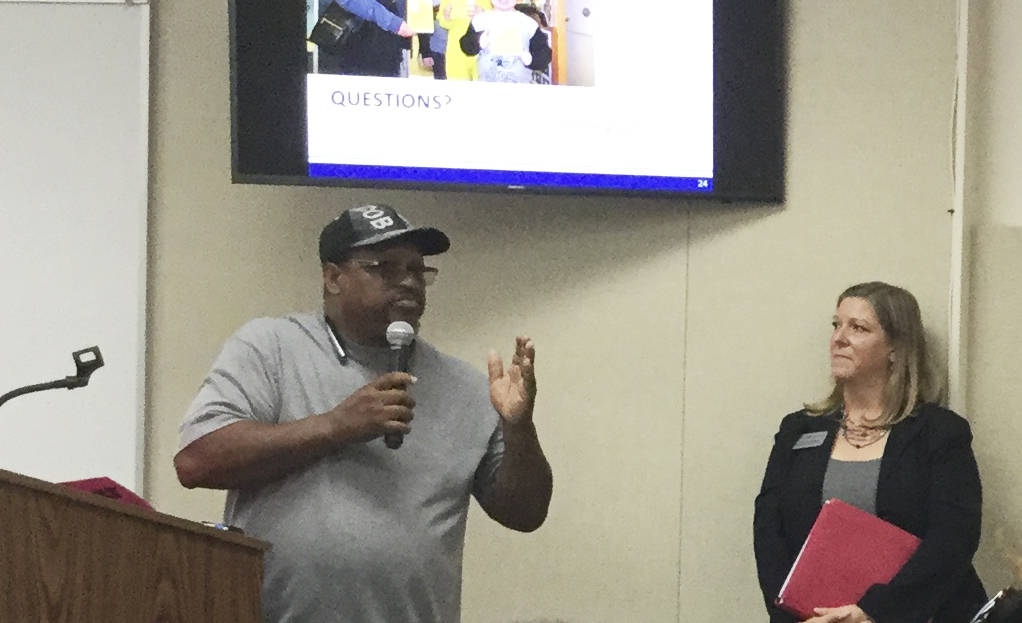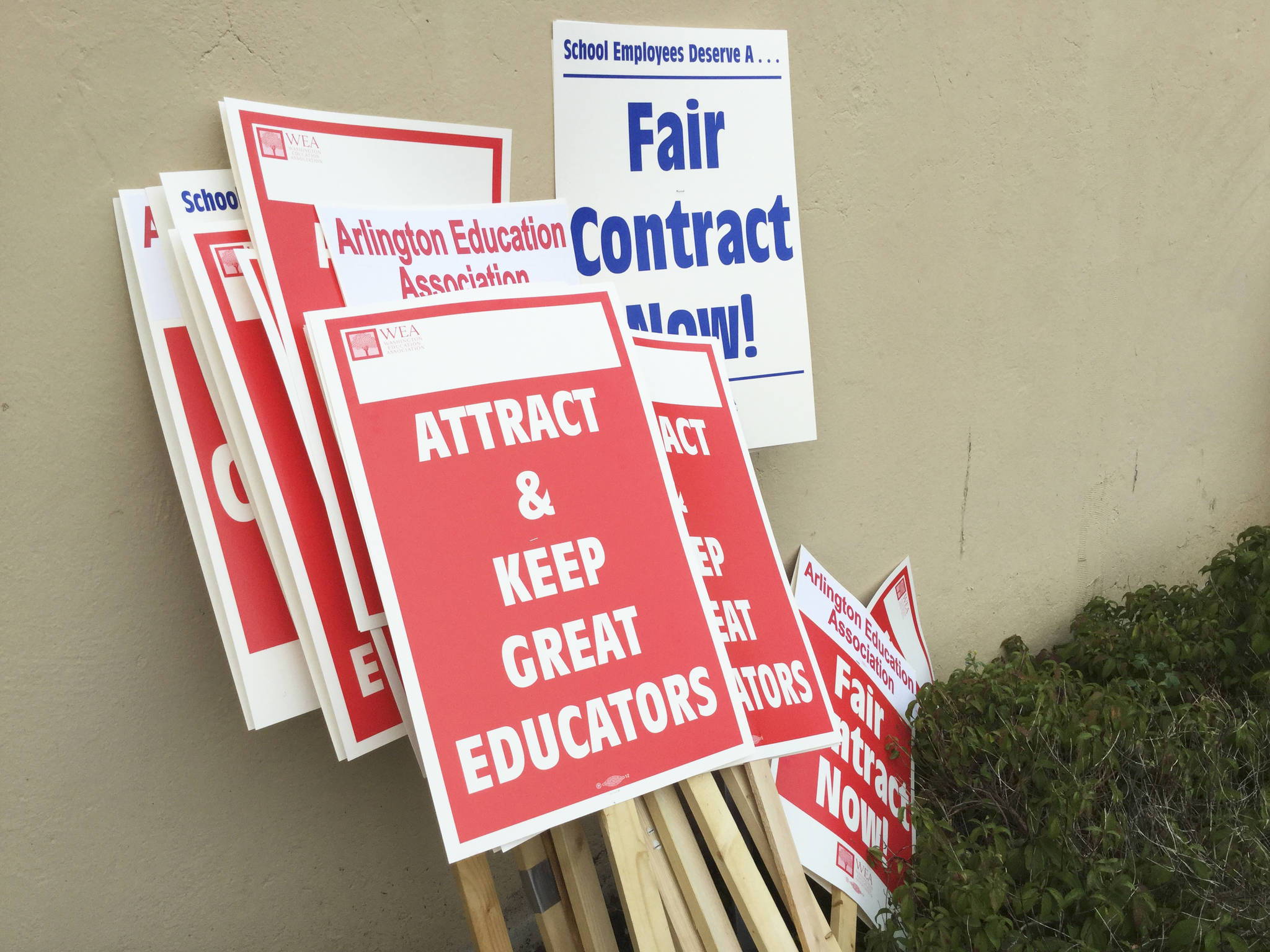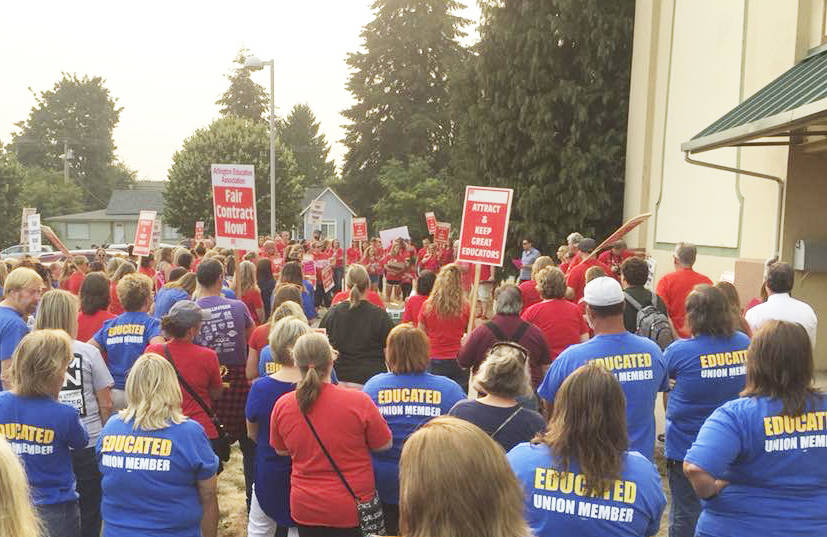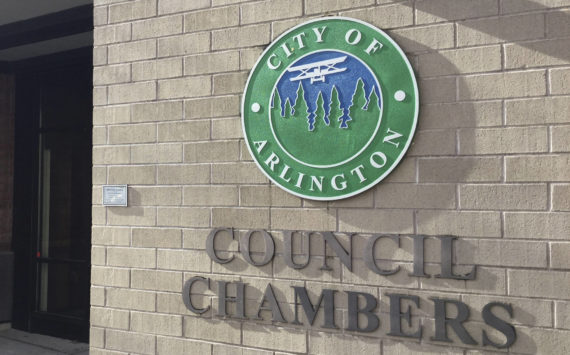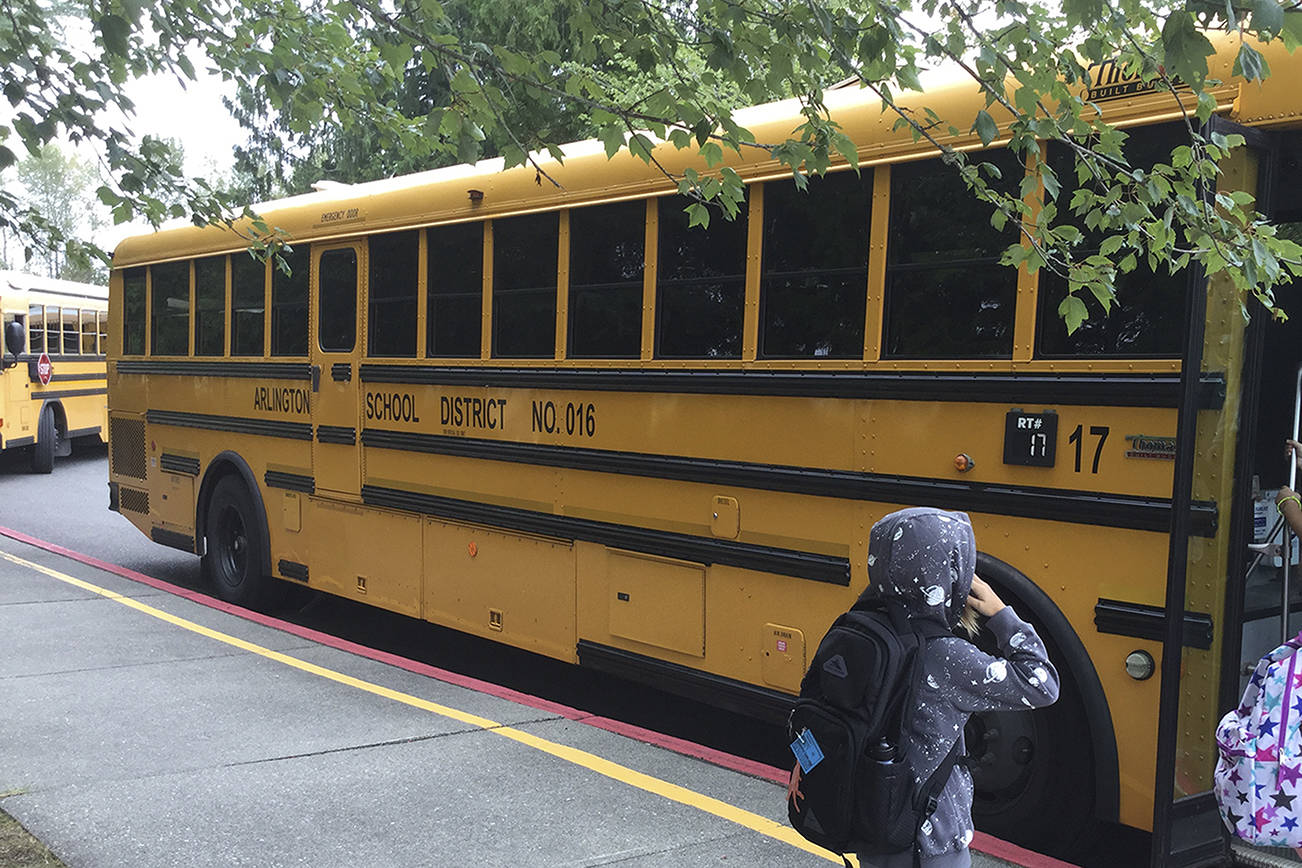ARLINGTON – Teachers rallied outside the Arlington Public Schools administration building seeking a double-digit pay raise as contract negotiations with the district edge closer to the first day of school Sept. 5.
A sea of teachers in red shirts and classified workers in blue packed the board room, spilling into the hallway out to the building entrance Monday.
Waving signs including “Fair Contract Now” and “Don’t Hold McCleary Hostage,” they were there to let district leaders know that they want the educator pay they say is due them as part of the overhaul of the state’s education system.
The Arlington Education Association (AEA) teachers union and the district were two of the first signators on the McClearly lawsuit that led to a ruling by the state Supreme Court that the state was failing in its constitutional duty to fully fund basic education.
Since the 2012 decision, lawmakers have boosted school funding by about $9 billion, including $1 billion this year and $1 billion for last year for educator salaries.
“We started this together, so why is the district going to war over past due money that the state has allocated for educators’ salaries?” said Robin Foster, a Post Middle School teacher.
The district hasn’t budged from offering a 3.1 percent wage increase, a one-time cap on increases referenced in bills passed by the legislature and based on the current Seattle consumer price index. The increase is included in the 2018-19 budget the school board passed.
AEA president Jason Klein, while mum about specific numbers, said that the union is looking for double-digits, along with smaller class sizes.
“Our range is in comparison to some of the other settlements around the area very similar,” Klein said for the union that represents about 330 teachers. “We are significantly far apart, and we haven’t seen a lot of movement on their side.”
The parties are headed back to the negotiating table on Aug. 20.
The AEA has already voted 99 percent in favor to strike if a tentative agreement cannot be reach with the district.
APS Superintendent Chrys Sweeting said she hopes it doesn’t come to a strike.
“I remain hopeful that we will work in good faith,” she said. “In a strike, nobody wins.”
Sweeting that the state’s new funding formula is inequitable, and not as simple as it sounds.
The overhaul included scrapping the old salary schedule, capping the amount of money districts can collect through local property tax levies and limiting what levy money can be spent on.
Districts with a lot of experienced teachers, like Arlington, for example, may not fare as well because the new salary format gives a flat allocation instead of taking tenure and education level into account. In districts with a less experienced workforce, the flat amount goes further.
The average annual teacher salary average to be reimbursed by the state including the regionalization factor for Arlington is $72,954. Arlington’s average salary is $85,640, with a third of its teachers employed for several years and staying put because the district is viewed as a favorable place to work.
Sweeting said the intent of bills passed in the last two legislative sessions are open to legal interpretation about whether the 3.1 percent is the cap for the current year, which is considered a transition year in the law.
Provisions in the law state the CPI cap is only a one-year limitation on compensation, so there is still an opportunity to address increases in later years of a multi-year agreement.
Sweeting said that even if the pay increases stayed the same for the next four years, the district will lose its local levy authority – replaced by “enrichment” levies and decreasing revenues. These can only be pursued for extra programs like extended school days, additional courses, early learning programs and other state-approved activities. The changes in how schools are funded will pose a challenge for the district’s fund balance by 2021 and 2022.
Chris Reykdal, state Superintendent of Public Instruction said in a statement this year’s legislation created a “wide-open collective bargaining framework.” He added that regionalization, exceptions to the cap and other factors will enable some districts to give lofty increases that some neighboring districts won’t be able to match.
Parent Gregory Jackson has children in Arlington schools. He joked that there are moments the kids can get on his nerves, but teachers have the tough job of dealing with students class after class, often preparing lesson plans outside of school hours.
Do what is right by the teachers, Jackson said.
“Give them what they deserve to have, and treat them fairly,” said Jackson, whose remarks were met by sustained cheers and applause that reverberated through the hallway.
Eagle Creek Elementary teacher Kristen Bass, joined by her kindergarten class of 2024 son, Leo, said the district’s own numbers show how flush with cash they will be based on long-term forecasts.
The district expects to end the 2017-18 school year with an $8.6 million fund balance, $3.6 million more than originally budgeted.
“This is money that could have been spent to meet the K-3 class mandate allocated to the district for this specific reason,” Bass said. “As a teacher and parent of two with students in the district, this is very frustrating to me.”
In 2018-19, the district anticipates closing the fiscal year with an ending fund balance of $13.1 million, nearly three times the district reserves policy.
“The increase in state funding is more than enough to offset any decrease in local funding,” Bass said.
Bass said the AEA is asking only for a portion of the fund balance increase to apply toward compensation.
“By not doing so, you are sending the wrong message,” she said.
Mike Liles, an Arlington High School science teacher, has seen past labor negotiation follow the same pattern of the district lacking money, then paying out 2 percent to 4 percent increases. This year seems to be no different.
Last year’s talks went down to the wire when the union ratified a one-year contract the day before the first day of school, averting a potential strike.
This year, he said: “We all knew it was a new world. The old salary schedule is gone, and the McCleary decision has mandated that salaries, wages, class sizes and other programs be funded.”
Sarah Cofer, a 2nd grade teacher at Pioneer Elementary, said she has never needed to choose between the value of working in the city she lives in against competitive pay, until now.
“Our current pay will put me in a position where I have to make such a choice,” she said. “The Edmonds School District pay scale is now $21,000 more a year for my experience and education.”
Larry Delaney, a math teacher at Lakewood High School, spouse to a Pioneer teacher and father to AHS daughters, said Arlington teachers are among the best-paid in the state, which enabled the district to recruit and retain the best educators.
“The landscape for teacher compensation is changing,” Delaney said. “The administration and board may not like it, but that does not make it any less real.”
A poll conducted by the WEA said voters support pay raises of at least 15 percent for teachers and education support professionals.
That appears to be a rallying point for districts around Washington, with pay raises including in Edmonds – 20 percent, Everett – 15 percent and McCleary – 13.7 percent.
“The settlements, and those to come, are going to forever change the lives of educators,” Delaney said.
